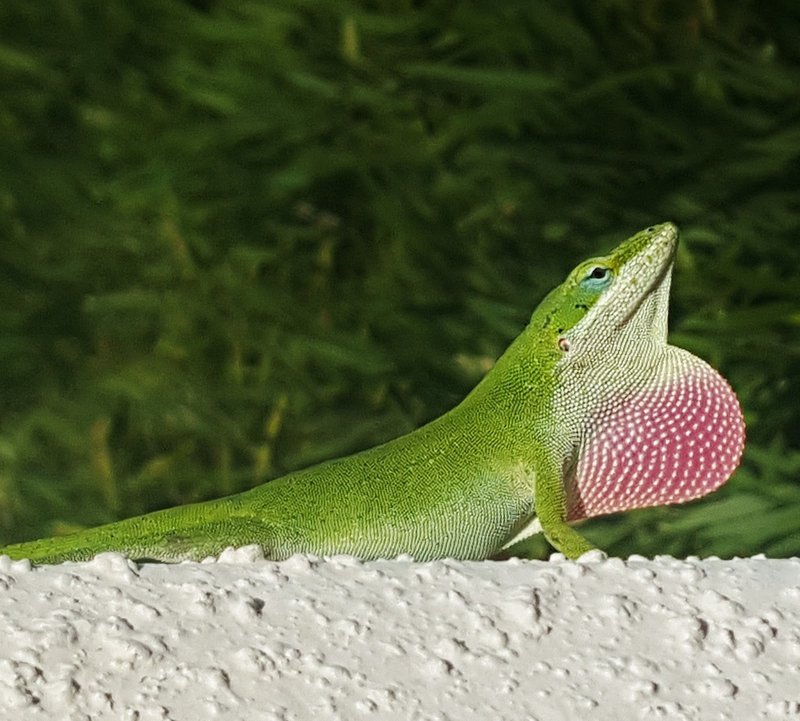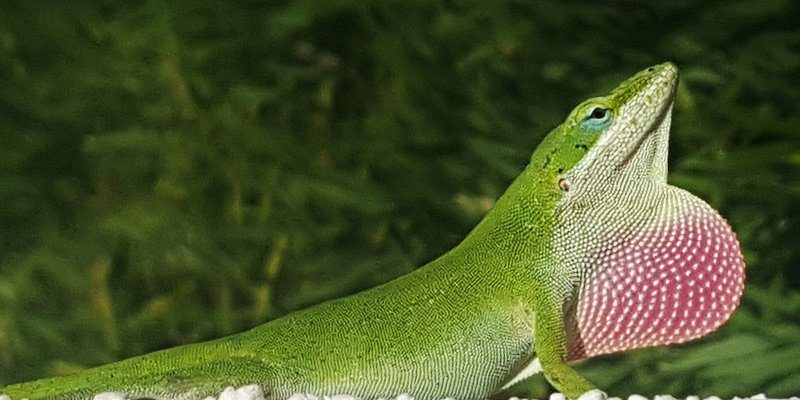
Imagine you’re at a summer picnic, and suddenly, a storm rolls in. You’ve got to adapt fast, right? Well, anole lizards must do the same but with their surroundings. They have a knack for adjusting their behavior and physiology to stay safe and find food in the wild. Let’s dive into the fascinating world of anole lizards and discover how they manage to survive and even thrive in harsh environments.
1. Adaptability: The Key to Survival
Adaptability is the hallmark of survival in nature.
The anole lizard is nothing if not adaptable. These small reptiles can change not only their color but also their behavior to fit their surroundings. This ability is crucial when they need to hide from predators or ambush prey. For instance, some anoles turn darker in the shade and lighter in sunlight, blending seamlessly into their environment. This color-changing ability isn’t just for show; it’s a survival tactic that keeps them safe.
Beyond camouflage, anoles are known to alter their habitats. They can often be found in different types of vegetation, from trees to shrubs, depending on what’s available. This flexibility helps them find food and escape danger. You might say anoles are like resourceful house guests who can make themselves at home anywhere!
2. The Power of Territorial Behavior
Anole lizards are also fiercely territorial. They stake out their claims in specific areas, using a combination of displays and vocalizations to communicate with others. This behavior is essential for survival, especially when food sources are limited. By establishing territory, anoles can ensure they have access to the resources they need without constant competition.
In the face of harsh environments, these territories can shrink or expand based on the availability of food and shelter. For example, if a drought occurs, anoles may need to adjust their territory to find moisture and food. This dynamic approach allows them to maintain their strength and find necessary resources, proving that they can roll with the punches.
3. Surviving the Heat: Unique Physical Adaptations
Heat can be a killer for many animals, but anoles have evolved some pretty clever adaptations to keep cool. These lizards typically love warm climates, but they can struggle when temperatures soar. To combat this, they often bask in the sun during cooler parts of the day, like early morning or late afternoon. This strategy helps them regulate their body temperature without overheating.
Additionally, anoles are experts at finding shade and moisture. When it gets too hot, they retreat to cooler areas, like bushes or shaded rocks. Imagine seeking shelter under a tree on a hot summer day—that’s exactly what they do. This behavior not only conserves energy but also reduces stress, ensuring they stay healthy in challenging conditions.
4. Managing Water: A Delicate Balance
Water management is another critical survival skill for anole lizards. In harsh environments, finding enough moisture can be a challenge. Anoles have developed a few tricks to deal with this. They can absorb moisture through their skin and often drink water from dew or rain when it’s available.
Moreover, when water becomes scarce, these lizards can adjust their activity levels. By being less active during dry spells, they conserve water and energy. Think of it as a smart savings plan—anoles know when to splurge (like during a heavy rain) and when to save for a rainy day (or drought).
5. The Role of Diet in Harsh Environments
What anoles eat can also affect their survival in tough conditions. These lizards primarily eat insects, with a diet that can include crickets, ants, and even small spiders. In harsher environments where food may be scarce, their ability to switch up their diet becomes crucial.
For example, if one type of insect disappears, anoles are quick to adapt by seeking out different prey. They’re like flexible eaters at a buffet—if one dish is empty, they’re right on to the next! This adaptability in their diet allows them to thrive even when the going gets tough.
6. Social Structures and Survival Strategies
Anole lizards often exhibit interesting social behaviors that enhance their survival. You might see them engaging in displays or “push-ups” to assert dominance and attract mates. These social interactions aren’t just for show; they help anoles establish hierarchy within their environments, ensuring access to resources.
The social structures among anoles can also provide support during tough times. In groups, they can help each other find food or warn of predators. It’s similar to a neighborhood watch—having friends around increases safety and boosts the chances of survival.
7. Conservation and Future Challenges
Despite their impressive survival skills, anole lizards face significant threats. Habitat destruction and climate change can drastically alter their environments. As temperatures rise and habitats shrink, these lizards are forced to adapt even further. Conservation efforts are vital to ensure they can continue to thrive.
Efforts to protect their environments are crucial, from preserving their natural habitats to promoting awareness about climate change. After all, if we want to see these fascinating creatures flourish, we need to support the ecosystems they rely on.
The anole lizard is a remarkable example of nature’s ingenuity. Their survival in harsh environments showcases how adaptability, clever behaviors, and social structures come together to create a resilient creature. Whether it’s adjusting their diets, managing water intake, or embracing their territorial nature, anoles do what it takes to survive.
As we learn more about these fascinating lizards, we can appreciate the delicate balance of nature and the importance of protecting their habitats. With our help, anole lizards can continue to thrive in the wild, reminding us of the beauty and resilience of life. So next time you see one basking in the sun or darting between branches, take a moment to admire their incredible survival story.

